
They waddle, they're regal, they stand tall and proud. When you think of penguins, chances are you're thinking about emperor penguins, with their classic colouring and outstretched necks.
Let's get to know a little more about these penguins with the following fun facts.
1. They can tell each other apart
When you have breeding grounds full of hundreds of thousands of birds that look pretty much identical, it can get a little tricky trying to bring home the bacon (and by bacon, we mean regurgitated fish) to the right family.
To get over this little identity crisis, emperors have developed unique voices so that adults can find their way back to their own particular family - even amongst throngs of loud and hungry lookalikes.
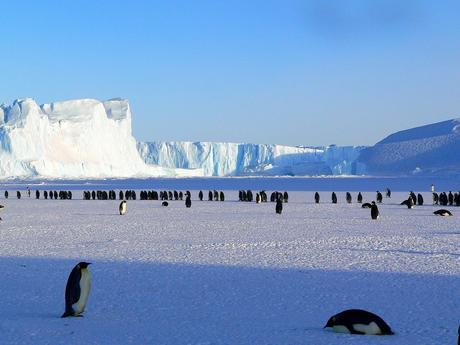
2. They're the biggest kid on the block
Emperors stand the tallest out of all the different species of penguin. At an average of 115 cm, they're about the same height as a five-year-old human being.
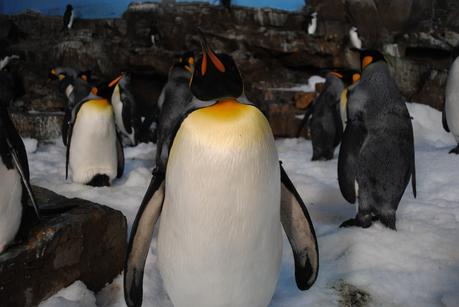
3. They're pretty decent climbers
You wouldn't think it to look at them, but emperor penguins are actually pretty good at climbing steep vertical surfaces. Scientists have found more than one emperor colony on ice shelves. They tend to make such climbs when the sea ice isn't stable enough, a condition that's becoming more prevalent thanks to the climate change.
4. Male Emperor penguins have big droopy pouches
You've probably seen pictures of emperors waddling around with their eggs or chicks balanced on their feet. Chances are you're looking at a male in those pictures. Males have a layer of skin called a brood pouch, which serves to keep their eggs nice and warm.
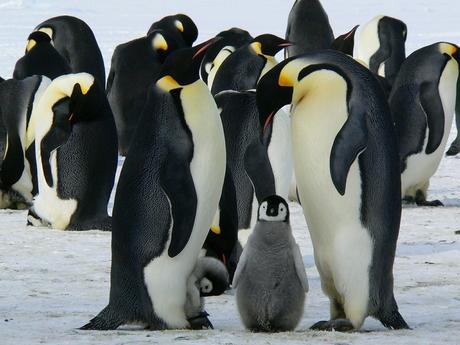
5. They're (possibly) the only bird in the world that never sets foot on solid ground
We mentioned emperors climbing ice shelves above, but that's an adaptation to shrinking sea ice. Normally emperors stick to that sea ice or the sea itself when they go to feed, meaning most of them don't ever end up waddling across genuine terra firma.
6. They seem to enjoy making things difficult on themselves
Other penguin species have made the sensible choice to do their egg-making in the relative warmth of the southern hemisphere's summer months (the same months Antarctic cruises visit the area). Emperor penguins, on the other hand, wait until winter has truly set in, only making goo-goo eyes at each other in late April or May.
And while other species retreat to the north (outwards from the centre of Antarctica, towards its warmer coasts) when winter sets in, emperors head south into the worst weather.
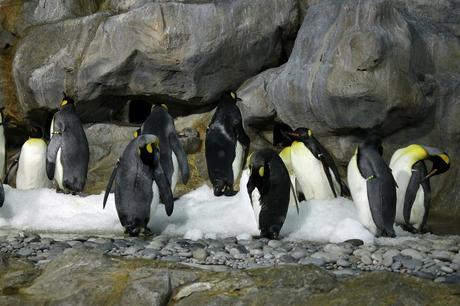
7. Their black and white colouring isn't just so they can look fancy
Like other penguins, emperors have that distinct tuxedo look, with black backs and heads and white bellies. This colour actually serves a very useful purpose: It's camouflage.
When seen by a predator seal from below, the emperors' white bellies blend them in with the light from the sun filtering down through the water from above. And when the seal is above the penguin, the emperor's black back blends them in with the inky depths below.
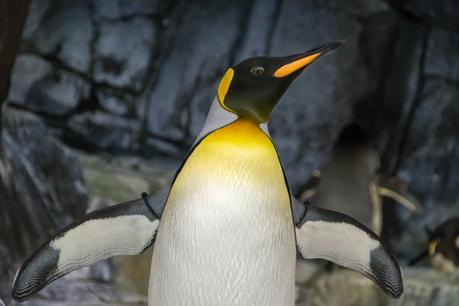
8. They're excellent divers
Maneuvering like little torpedoes, emperors can stay underwater for over 20 minutes at a time and can dive over 500m as they hunt for food.
9. Males get pretty hungry
Once the female lays the egg, she'll head off to the sea to get something to eat. The male, on the other hand, who's been there since the start of the breeding season, does not get to eat then... In fact, he doesn't eat for about four months, from the beginning of the season until the female comes back.
During that time, in which the male is caring for the egg, he'll survive off his body's fat, losing up to half his total body weight.
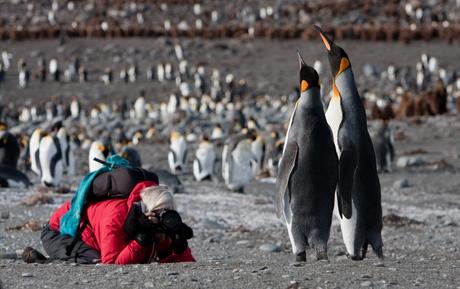
10. Even though they're the biggest penguins, emperors actually have some of the proportionally smallest flippers and beaks
The thin beaks and flippers are tools for survival. Since emperors waddle face-first into some of the worst conditions Antarctica has to offer, they need to reduce heat loss as much as possible. Thin beaks and flippers have less surface area, which means less of the emperor's non-feathered body parts are exposed to the cold, and this results in less heat loss.
This Guest Blog Post has been contributed by Matt! Thanks Matt for sharing your Antarctic wisdom with us!
Originally from South Africa, now living in Australia, Jolene is a wife and a mother to three beautiful daughters. Together with her family, she is embarking on a journey towards changing her current stress-filled life to one focusing on her dreams and her passion for travel. She wants to share her stories in the hope to inspire you to chase your own dreams!
